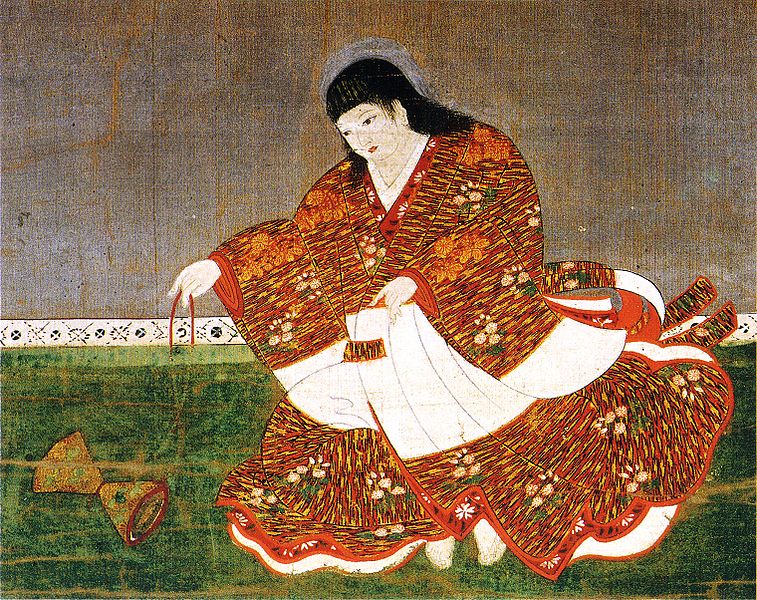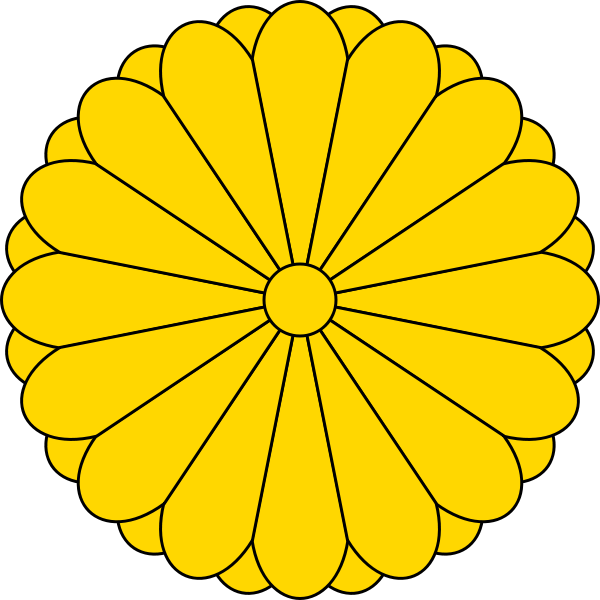<Back to Index>
- Mathematician Dmitri Fyodorovich Egorov, 1869
- Writer Johan Sebastian Cammermeyer Welhaven, 1807
- Emperor of Japan Antoku, 1178
PAGE SPONSOR


Emperor Antoku (安徳天皇 Antoku-tennō) (December 22, 1178 – April 24, 1185) was the 81st emperor of Japan, according to the traditional order of succession. His reign spanned the years from 1180 through 1185. During this time, the imperial family was involved in a bitter struggle between warring clans. Yoritomo, with his cousin Yoshinaka, led a force from the Minamoto clan against the Taira, who controlled the emperor. During a sea battle in April 1185, a member of the royal household took Antoku and plunged with him into the water in the Shimonoseki Straits, drowning the child emperor rather than allowing him to be captured by the opposing forces. The conflict between the clans led to numerous legends and tales. Antoku's tomb is said to be located in a number of places around western Japan, including the island of Iwo Jima, a result of the spreading of legends about the emperor and the battle.
Before his ascension to the Chrysanthemum Throne, his personal name (his imina) was Tokohito - shinnō (言仁親王). He was also known as Kotohito - shinnō.
His father was Emperor Takakura. His mother, Taira no Tokuko (平徳子), second daughter of Taira no Kiyomori (平清盛), was later referred to as Empress Dowager Kenrei (建礼門院, Kenrei-mon In).
Antoku was named crown prince at around one month of age. He ascended the throne at one year of age. Naturally, he held no actual power, but rather his grandfather Taira no Kiyomori ruled in his name, though not officially, as sesshō (regent).
- 1180 (Jishō 4, 21st day of the 4th month): In the 12th year of Takakura - tennō 's reign (高倉天皇12年), the emperor was forced to abdicate; and the succession (‘‘senso’’) was received by his infant son, the grandson of Taira Kiyomori. Shortly thereafter, Emperor Antoku is said to have acceded to the throne (‘‘sokui’’).
In the year of his enthronement, the capital was moved to modern day Kōbe, Hyōgo, but it was soon moved back to Heian - kyō.
- 1183 (Juei 2, 20th day of the 8th month): Go-Toba is proclaimed emperor by the Genji; and consequently, there were two proclaimed emperors, one living in Heian - kyō and another in flight towards the south.
In 1183, when Minamoto no Yoshinaka entered the capital, the Taira clan fled with the young emperor and the sacred treasures to Yashima (the name of a place inside modern day Takamatsu, Kagawa). Being defeated in the Battle of Yashima, they fled westward.
- 1185 (Genryaku 2, 24th day of the 3rd month): The Taira and the Minamoto clashed in the Battle of Dan-no-ura.
The Taira were defeated. Antoku's grandmother, Taira no Tokiko, the widow of Taira no Kiyomori, drowned herself along with the young emperor. His mother also drowned herself, but apparently, according to The Tale of the Heike (Heike Monogatari), she was pulled out with arake by her long hair. According to legend, the sacred jewels and the sacred sword (two of the three sacred treasures) sunk to the bottom of the sea, and although the sacred jewels were recovered, the sword was lost.
The story of Emperor Antoku and his mother's family became the subject of the Kamakura period epic poem The Tale of the Heike (Heike is an alternate reading of the Japanese characters for "House of the Taira").
Kugyō (公卿) is a collective term for the very few most powerful men attached to the court of the Emperor of Japan in pre - Meiji eras.
In general, this elite group included only three to four men at a time. These were hereditary courtiers whose experience and background would have brought them to the pinnacle of a life's career. During Antoku's reign, this apex of the Daijō - kan included:
- Sesshō, Konoe Motomichi, 1160 – 1233.
- Udaijin
- Nadaijin, Taira Munemori, 1147 – 1185.
- Dainagon
After his drowning, in order to mourn the body and placate any restless spirits, the Amidaji Goeidō was built. Later, Antoku was enshrined at the Kurume - Suitengū in Kurume, Fukuoka, and he came to be worshipped as Mizu-no-kami (水の神, lit. "water - god" or "god of water"), the god of easy delivery at Suitengū (水天宮, lit. "water - heaven / emperor - shrine") everywhere.
With the establishment of Shintō as the state religion of Japan, the Amidaji Temple was abandoned and the Akama Shrine was established in Shimonoseki, Yamaguchi to celebrate Antoku.
The Imperial Household Agency designates Amida-ji no misasagi (阿彌陀寺陵) near Akama Shrine in Shimonoseki, Yamaguchi as Antoku's tomb.
The years of Antoku's reign are more specifically identified by more than one era name or nengō.
- Jishō (1177 – 1181)
- Yōwa (1181 – 1182)
- Juei (1182 – 1184)
- Genryaku (1184 – 1185)
- Bunji (1185 – 1190)